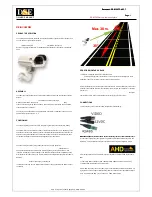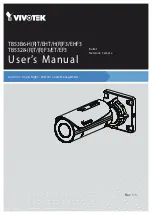
Exposure:
Though sometimes thought to be photography's biggest problem, obtaining correct exposure is not really so
difficult thanks to the latitude of modern-day films. There are three governing factors: sensitivity to light of the
film (usually expressed as an ASA speed rating); shutter speed, which controls the amount of time the image is
allowed to affect the film; and the lens aperture, which controls the brightness of the image falling on the film.
It is recommended to use a minimum shutter speed of 1/125th second where possible, (certainly for the majority
of outdoor subjects). This speed is fast enough to prevent most 'blur due to camera or subject movement, yet is
slow enough to permit picture-taking in a wide variety of lighting conditions with today's sensitive films. If its
necessary to shoot at 1/60th or 1/30th second, hold the camera as steady as possible -- ideally by using a tripod,
or by bracing your arms on a nearby table or other support.
4www.butkus.org
Your TTL Meter and how to use
Power Source
The camera is supplied complete with a battery (PX 625). To check that the battery is fitted, use a
small coin (half penny) to turn the battery compartment cover anti-clockwise for removal.
Ensure that the battery is fitted with the + sign facing you,
then re-fit the battery cover as follows. Holding the cover at
an angle to the camera (see illustration), insert the lug under
the rim at the top of the compartment and press the cover into
position so that the two spring clips engage in the cut-outs on
either side. The coin can then be used to turn the cover
clockwise until it locks.
Meter Check
The meter needle normally zeros (comes to rest) over the circle seen on the right-hand side of the viewfinder.
Before using the camera ensure the meter is working by setting the Film Speed Selector
(17)
at 500 ASA, the
Shutter Speed Dial (1)at 1/30th sec and the Aperture Ring
(14)
at f/2. Point the camera at any bright light source
and, while looking through the viewfinder, depress the Shutter Release Button
(3).
Continue depressing the
Release Button until it activates the meter switch which should deflect the meter needle upwards past the + sign.
If there is no deflection of the needle this indicates the probability of a dead battery. The meter should be
checked regularly in this way and batteries replaced at least once a year to ensure accuracy in use.
Using the Meter
1.
Set Film Speed. The Film Speed Dial
(17)
has
2 scales of figures on it, one marked for films
rated at 16,32,65, 130, 250 and 500 ASA and the
other marked in DIN ratings of 13, 16, 19,22,25
and 28. Turn the selector until the speed number
for your film shows against the index marked on
the camera top. The dial is click-stopped and so
must be turned till it locks onto one of the
numbered or intermediate settings. Select the
number or setting nearest the speed of your film
2.
Aim the camera at your subject. Bearing in
mind the subject matter of your photograph select
what you consider to be a suitable shutter speed.
Now, while looking through the viewfinder,
depress the Shutter Release Button
(3)
as
described in Meter Check procedure. This
activates a switch in the metering system which in
turn deflects the meter needle (either up or down
depending on the lighting conditions).







































